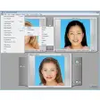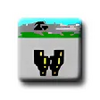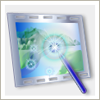Software for morphing photographs and making animations
Software for morphing photographs and making animations
Vote: (28 votes)
Program license: Trial version
Developer: Abrosoft
Version: 5.4.8
Works under: Windows
Vote:
Program license
(28 votes)
Trial version
Developer
Version
Abrosoft
5.4.8
Works under:
Windows
Pros
- Intuitive user interface and helpful wizard
- Accurate dot placement for realistic morphing effects
- A variety of additional visual and audio effects to augment morphs
- Multiple export options including video, image sequence, and screensaver
- New features such as Layer Morph and improved rendering
Cons
- Interface buttons and working area can be too small
- Zoom tool may complicate navigation
- Limited scalability of the user interface
Abrosoft FantaMorph allows users to morph two images into a smooth and captivating transition animation or to warp a single picture to create dynamic effects. Designed with user-friendliness in mind, it is equipped with tools that cater to both beginners and advanced users looking to add a touch of visual intrigue to their presentations, projects, or personal collections.
Streamlined Morphing Process
Abrosoft FantaMorph offers an intuitive wizard that guides users step by step through the morphing process. Simple enough for beginners, this software doesn’t compromise on the precision that more experienced users demand. The morphing effect relies on the strategic placement of dots on key parts of the picture to specify transformation areas. Achieving a realistic morph requires detailed dot placement, which the software capably facilitates.
Dot Management and Image Handling
The dot management system is robust. Users can conveniently add dots to corresponding features on both source and target images, enhancing alignment accuracy which is pivotal for a seamless morph. Handy tools like a grid overlay and zoom functionality aid in refining the precision of dot placements. Keep in mind, though, that while zooming helps with detail work, navigating the image can become cumbersome due to the fixed workspace size and small interface buttons.
Enhancements and Export Options
Complementing its core functionality, Abrosoft FantaMorph boasts a plethora of additional effects including background images, masks, music tracks, and transitional effects. These can be readily explored and applied from within the wizard or interface, with real-time previews to gauge the impact on the morph. Final projects can be exported in multiple formats, including AVI video, image sequence, a webpage, or even as a screensaver.
Continuous Improvement and Advanced Features
Abrosoft FantaMorph is continuously evolving, with updates bringing in advanced features like Layer Morph capabilities which allow for multi-layered morphs, creating more complex and professional-looking final products. Enhanced rendering engines ensure high-quality output, whereas updated face extraction and locator tools provide higher speed and accuracy. The latest versions also integrate better multi-monitor support and a more flexible workspace. The Sequence List Panel simplifies sequence management, and the new Trail effect adds motion blur for a more dynamic animation.
In Summary
Abrosoft FantaMorph strikes a balance between usability and sophistication. It provides an array of tools and effects that enhance morphing projects, leading to professional results accessible even to those new to photo animation. While it can improve in terms of interface scalability and navigation, it remains a powerful software choice for users seeking to delve into the world of image transformation and animation.
Pros
- Intuitive user interface and helpful wizard
- Accurate dot placement for realistic morphing effects
- A variety of additional visual and audio effects to augment morphs
- Multiple export options including video, image sequence, and screensaver
- New features such as Layer Morph and improved rendering
Cons
- Interface buttons and working area can be too small
- Zoom tool may complicate navigation
- Limited scalability of the user interface




